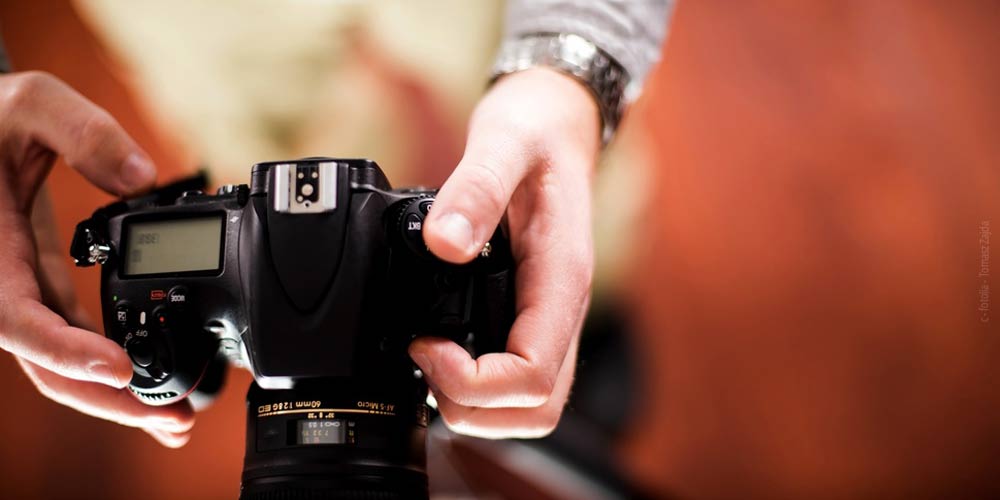Landscape photography – How to take the perfect picture of a waterfall
Photographing landscapes is probably one of the most pleasant objects, as it is well known that they do not move from the spot. However, there are also motifs in the landscape that have their own dynamics, the passing clouds in the sky, treetops that sway back and forth with the wind or waterfalls that plunge many meters deep. In general, waterfalls are among the motifs that breathe life into landscape photography. Below you will find some interesting tips to help you take the best pictures of a waterfall.
6 tips for beautiful waterfall shots
taking pictures of waterfalls with the right equipment
It is important that you capture water movements so that your recordings get the appropriate dynamics and drama. When shooting with a smartphone or compact camera, you’re faced with a big problem because you can’t set the shutter speed. The movement of the water gets so lost in you. The basic prerequisite for photographing waterfalls is therefore a camera whose exposure time has to be set manually.
Half a second is usually enough to turn a seemingly boring subject into an extraordinary shot. The water becomes foggier the longer the exposure time is. Since no human is able to hold a camera motionless for several seconds and not even at half a second, you secondly need a tripod. This is the only way to show the waterfall in its best light.
attention to the light
If you have your camera and tripod, you can find the most beautiful spot with the most appealing light at the waterfall to create the right scenery. If the waterfall is directly confronted with the full sunlight, it is best not to unpack your equipment in the first place, because in this case the contrasts would be much too hard. However, if the light of the sun is under dense clouds or if the waterfall is in a narrow gorge without direct sunlight, you have excellent conditions. In addition, the twilight is also suitable to photograph a waterfall optimally.
Images of waterfalls with long time exposure
If the light and the point of view match, you can start taking pictures. It is important to expose for at least a quarter of a second so that you can record the movements of the water. In many cases, however, it is better to expose for several seconds. In order to achieve such an exposure time, it is sufficient to fade down to aperture 13 in the case of twilight. The advantage of this wide aperture is the fact that the photo is sharply photographed from the foreground to the background.
To extend the exposure time, you can also try closing the aperture even more, for example with aperture 22. If the exposure time is still too short even with the aperture wide closed, a gray filter or ND filter can help you. With a gray filter you can increase the exposure time significantly without having to close the aperture further.
You can get a gray filter in different strengths. For example, the exposure time doubles at a strength of 0.3 and quadruples at 0.6. You can also combine the filters. The corresponding filters are available in plastic and glass. Although glass filters are more expensive, they are largely colour neutral.
Avoid reflections
You can minimize reflections on wet leaves, stones, or water by using a polarizing filter. However, it is important to know that the use of a polarizing filter also has a prolonging effect on the exposure time. Of course, you can also use Photoshop to edit the images afterwards, but it’s nicer if you do everything right when you shoot.
It’s better to shoot one more image than one too little
Even if you have taken a photo with a certain exposure time, it is still worthwhile to test further exposure times. If you have different gray filters, then the exposure times are very simple for you to vary. If you ask yourself now whether all this effort is necessary at all, then this can be answered unequivocally with yes. Your picture results are often difficult to estimate on the display of your camera.
In many cases, it is only on your computer that you can see which recording is actually the best. You will notice that every single exposure time has its individual advantages. Unfortunately, there is no rule of thumb for the correct exposure time. It is largely dependent on the flow velocity of the water and the motif.
Give the certain touch
So that you can give your photos that certain something, it makes sense if you add an eyecatcher. Foam, for example, draws attractive patterns on the water or in autumn colourful leaves on the water provide a highlight. Also try different exposure times and keep your eyes open when you are in nature, so you will find many great eye-catchers.







